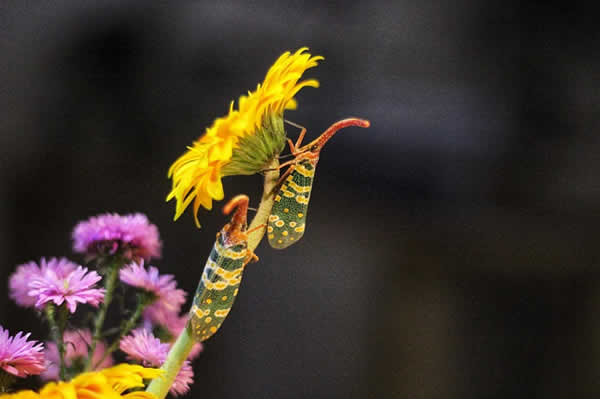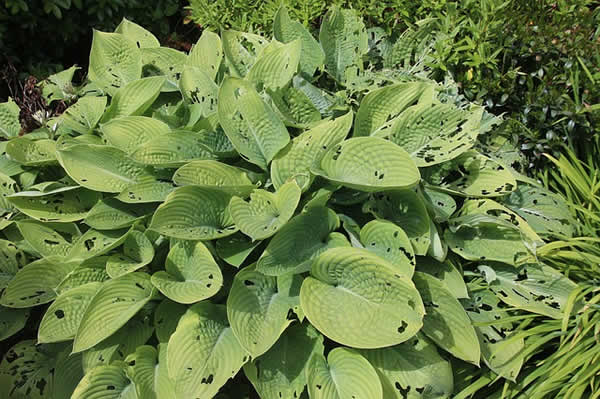This article explores the spotted lanternfly, an invasive pest that has the potential to severely damage fruit, vegetable, ornamental plants, and their surrounding ecosystems.

The Spotted Lanternfly
The spotted lanternfly is native to China and Vietnam, but it was unintentionally introduced into Pennsylvania in 2014 when a shipment of goods from Asia arrived. It is now found in thirteen states, including Maryland. Although they are not harmful to humans or animals, they do have a voracious appetite for plant life which can lead them to decimate crops overnight if left unchecked. These pests can be killed by no one other than a spotted lanternfly exterminator as they have no natural predators. The adult insects feed on leaves while the nymphs consume sap from tree branches and stems, weakening trees by blocking nutrients that help with growth.
The spotted lanternfly is distinctive with its grayish body, brown wings with black spots, and legs that are banded in black-and-white. The adult wine-red colored fly measures between 1.5" to 2" long (distinguishing it from other flies), while the nymphs (juveniles) are about 0.5" long with red abdomens, white spots, and black legs.
Spotted Lanternfly Life Cycle
Adult spotted lanternflies start mating in fall; nymphs hatch from eggs that were laid on tree trunks or branches during summer months. In springtime, the nymphs become adults and feed for a few weeks before laying eggs which hatch into nymphs that go through the cycle again. Their feeding and egg-laying can lead to severe damage to trees with bark damage, oozing sap from tree wounds, loss of leaves on trees with defoliation, dropped fruit from infested trees, and honeydew secretions on vehicles and other surfaces below them.
The females will lay 100-300 eggs during their lifespan of 30 days after mating only once.
Deadly Damage To Trees And Crops
The spotted lanternfly feeds off a wide variety of plants, including tree-of-heaven (Ailanthus altissima), an invasive tree species that is found in almost every state east of the Mississippi River except for Florida. They attack fruit crops such as grapes, apples, peaches, cherries, pears plums with a particular penchant for the sweetest varieties, hops, and hardwoods such as willow, maple, elm, birch. Their voracious appetites for plants pose a great threat to American agriculture, which is why they are closely monitored by researchers and state officials alike.
The spotted lanternfly has no natural predators here in America, so they have few enemies to keep their population down. This also means that there is little or nothing that can be used as an organic control measure against them.
If you spot one on any of your plants or trees, then dispose of them carefully by sealing them in a plastic bag to prevent the insects from escaping and contacting others that are nearby. This will help contain their spread while keeping future populations down. The Spotted Lanternfly feeds on more than 70 plants and trees. These include grapes, apples, cherries, pine, willow, maple, and a few others. The bug spreads by climbing trees and other plants then laying their eggs in the crevasses between branches or leaves where it is dark and moist.
How You Can Help With Spotted Lanternflies
If you think you've seen this destructive pest on any of your fruit trees or grapevines, then contact your local extension agent, who will help identify it for you. If it turns out to be a spotted lanternfly, then notify your state agriculture department immediately.
On top of the threat to commercial crops, this insect also poses a threat to nearby woodland ecosystems as they utilize dead wood for shelter from predators as well as nesting sites. Because of this, the spotted lanternfly has been known to defoliate host plants which can affect forest regeneration if not brought under control quickly enough. Another factor that makes this pest particularly destructive is that it feeds on a wide range of host plants, unlike other pests that only feed on one or two. This makes it difficult to ascertain which trees or crops will be the next target if the spotted lanternfly gains a foothold in an area
The best prevention for this pest is searching for early signs of their presence, such as egg masses, nymphs (immature specimens), and adults crawling up the trunk to lay eggs between branches or leaves during April through October when they are most active.

The spotted lanternfly has become an invasive pest that can cause severe damage to fruit, vegetable, ornamental plants, and their surrounding ecosystems. The best way to prevent this pest is for local authorities to inspect shipping containers and people's belongings when they arrive at airports, seaports, or crossings. If you know of any infestations in your neighborhood, then notify your local agricultural department immediately.
